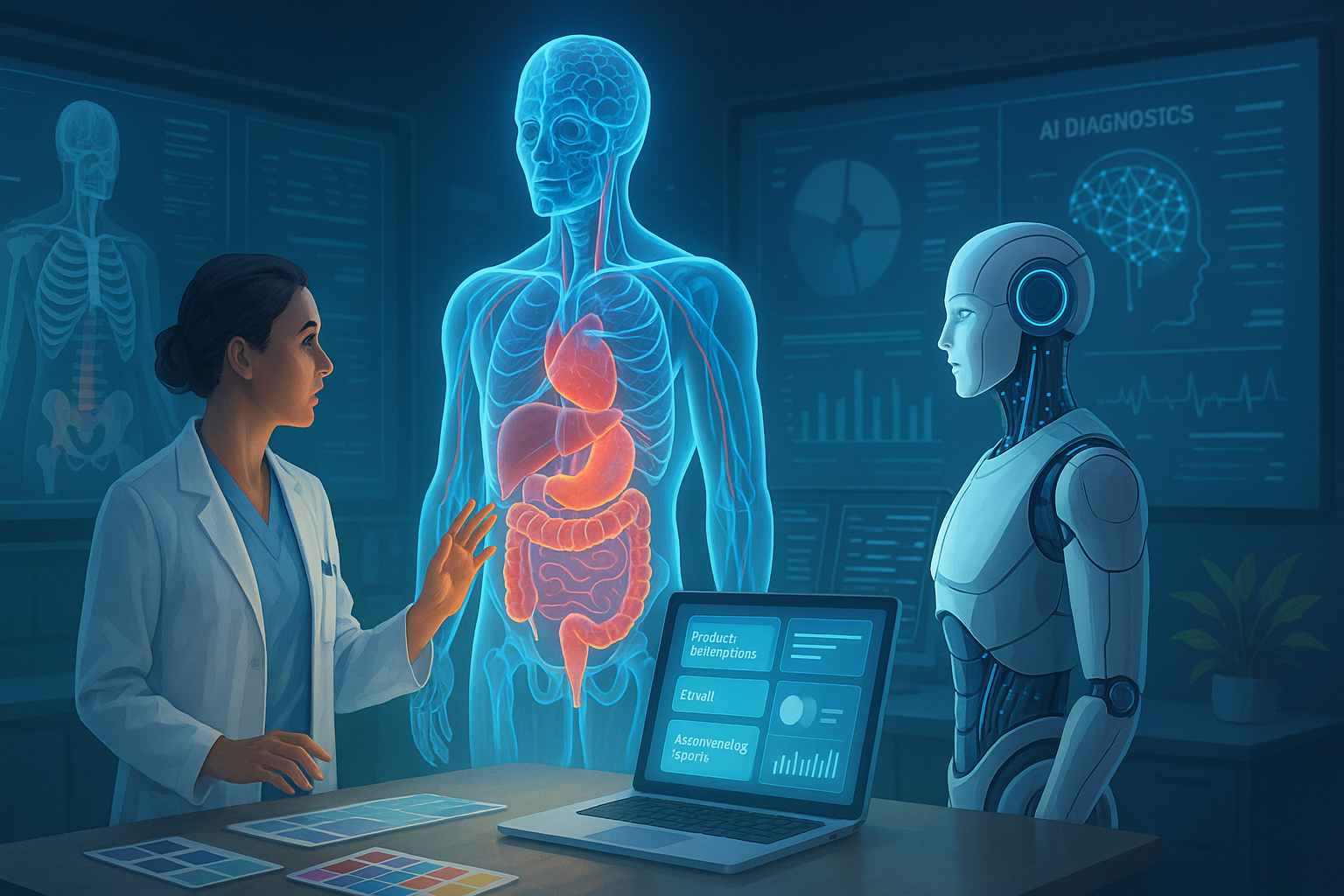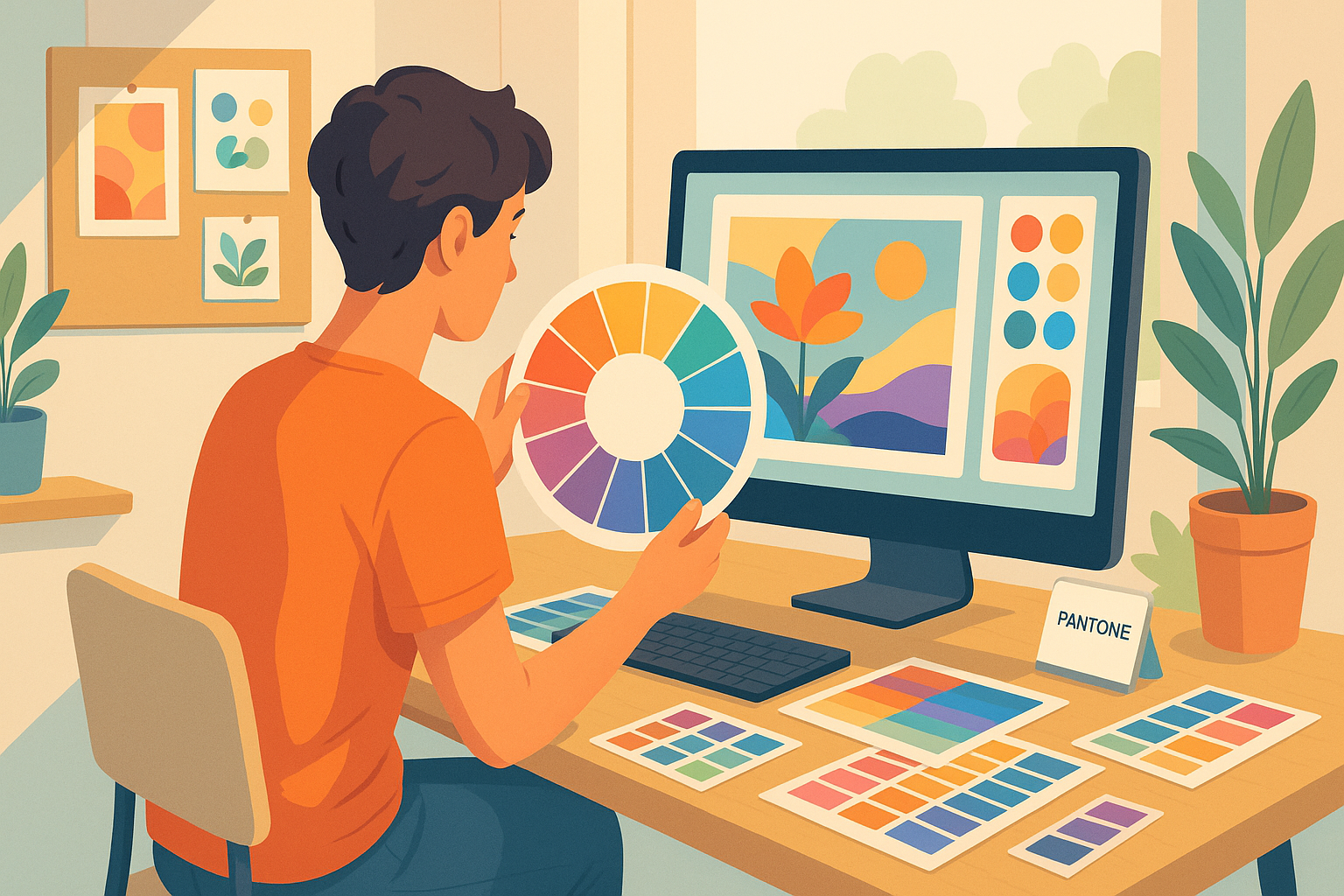The Future of Nature-Inspired Designs in AI

Why Nature Is the Next Frontier in AI Design
Artificial intelligence is transforming industries, but the next wave of innovation is taking its cues from an ancient source: nature. From swarm intelligence to neural networks, nature-inspired designs are helping technologists build systems that are more efficient, adaptable, and sustainable. As companies look for ways to solve complex problems and reduce environmental impact, the lessons embedded in biological systems are proving invaluable. This article explores how nature-inspired AI is evolving—and why it represents the future of design and technology.
Defining Nature-Inspired Design
What Is Biomimicry?
Biomimicry is the practice of studying nature’s strategies and applying them to solve human challenges. In AI, this means creating algorithms and architectures modeled after biological processes such as evolution, collective behavior, and neural function.
Principles of Biophilic Design
While biomimicry focuses on functional inspiration, biophilic design emphasizes human wellbeing by connecting people to nature. For AI interfaces, this could mean creating more organic, calming user experiences that reflect natural patterns and rhythms.
Evolutionary Inspiration in Algorithms
Evolutionary algorithms replicate natural selection to optimize solutions over time. By mimicking the process of mutation, crossover, and survival of the fittest, these systems find creative answers to complex problems that traditional approaches struggle to solve.
Historical Context
Early Experiments with Nature-Inspired Computing
The concept of borrowing from biology isn’t new. As early as the 1950s, researchers experimented with cybernetics, a discipline combining control theory and biology to understand how systems adapt and self-regulate.
From Neural Networks to Genetic Algorithms
Neural networks, inspired by the structure of the brain, have become the backbone of modern AI. Genetic algorithms, modeled after evolution, have been used since the 1970s to optimize designs and predict outcomes across industries from engineering to finance.
The Rise of Swarm Intelligence
Swarm intelligence emerged as scientists studied the collective behaviors of ants, bees, and fish schools. Algorithms based on these principles now power everything from logistics optimization to robotics swarms that can adapt to dynamic environments.
Current Applications in AI
Pattern Recognition Modeled on Biological Systems
Many of today’s most advanced AI systems rely on pattern recognition inspired by biology. Convolutional neural networks, for example, process visual data in ways that mimic how the human visual cortex recognizes shapes, edges, and patterns.
Adaptive Robotics Mimicking Animal Behavior
Roboticists are increasingly designing machines that emulate the adaptability and resilience of animals. From quadruped robots that walk like dogs to drones that flock like birds, these designs can navigate complex environments more effectively than traditional machines.
Self-Organizing Systems Inspired by Ecosystems
Self-organizing AI models borrow from ecological systems where organisms collaborate without central control. These decentralized networks can optimize supply chains, coordinate autonomous vehicles, and manage smart grids, adapting in real time to changing conditions.
Benefits of Nature-Inspired AI Design
Efficiency and Resilience
Natural systems have evolved over millions of years to be energy-efficient and robust. When AI systems adopt these strategies, they often require fewer resources and are better able to recover from failures or disruptions.
Scalability and Adaptability
Nature-inspired models scale organically. Whether you’re coordinating a fleet of delivery robots or analyzing massive datasets, systems designed on biological principles can adapt and grow without centralized bottlenecks.
Sustainability and Reduced Environmental Impact
By learning from ecosystems that thrive on closed-loop cycles, AI can help build more sustainable solutions. For example, bio-inspired algorithms can optimize energy usage, reduce waste, and design materials that regenerate instead of deplete resources.
Challenges and Limitations
Complexity of Biological Models
Nature is incredibly intricate, and capturing that complexity in code can be daunting. Models that attempt to replicate every nuance can become so computationally intensive that they lose practicality.
Ethical Considerations in Emulating Life
As AI grows more life-like, it raises ethical questions about autonomy, responsibility, and unintended consequences. Designers must consider how closely machines should mimic living organisms and whether this blurs important moral boundaries.
Balancing Innovation and Control
Self-organizing systems can behave unpredictably. While this adaptability is a strength, it also means that oversight and control become more challenging. Striking the right balance between innovation and governance is essential to maintain trust and safety.
Case Studies: Nature-Inspired AI in Action
DeepMind’s Protein Folding Breakthrough
DeepMind’s AlphaFold used AI modeled on evolutionary and biological processes to predict the 3D structures of proteins—an achievement that has accelerated drug discovery and biological research. This project demonstrates how nature-inspired design can solve problems once considered impossible.
Swarm Robotics for Disaster Response
Researchers have developed swarms of autonomous drones that mimic insect colonies. These robots can coordinate in real time to map disaster zones, locate survivors, and deliver supplies—all without centralized control.
Smart Grids Optimized Like Natural Ecosystems
Utility companies are deploying AI systems that manage energy distribution by emulating ecosystems. These grids balance load dynamically, adapting to demand fluctuations much like a forest balances resources among species.
Emerging Trends Shaping the Future
Neuromorphic Computing
Neuromorphic chips are designed to process information like the human brain, using spiking neural networks to achieve faster, more energy-efficient computation. As hardware catches up with theory, these chips could power the next generation of adaptive AI systems.
Generative Design and Evolutionary Systems
Generative design tools harness evolutionary algorithms to create thousands of design options optimized for performance, sustainability, and cost. This approach is transforming industries from aerospace to architecture.
AI-Driven Biomaterials and Sustainable Solutions
AI is helping scientists develop materials inspired by nature—like self-healing concrete, biodegradable plastics, and fabrics that mimic lotus leaves. These innovations blend AI and biomimicry to build a more sustainable future.
Design Principles for the Next Generation of AI
Embracing Diversity and Redundancy
Healthy ecosystems thrive on diversity and redundancy, ensuring resilience when conditions change. AI systems designed with multiple pathways and fail-safes can better handle unexpected events and recover from errors.
Prioritizing Regeneration Over Extraction
Traditional technology often depletes resources, but nature replenishes them. Embedding regenerative principles into AI—like circular economies and closed-loop processes—can reduce environmental impacts and promote long-term sustainability.
Embedding Adaptability and Learning
Biological systems constantly learn and evolve. AI designed to adapt in real time and incorporate feedback loops can remain relevant and effective as environments, users, and goals change.
Ethical and Societal Implications
Respecting Natural Systems
As we draw inspiration from nature, it’s critical to respect and protect the ecosystems we emulate. Over-reliance on AI-driven resource management could unintentionally disrupt the balance it aims to preserve. Ethical design requires an understanding of ecological limits and a commitment to stewardship.
Transparency and Explainability
Nature-inspired AI systems can be complex and difficult to interpret. Clear documentation and explainable algorithms help build trust with users and stakeholders, ensuring decisions are understood and accountable.
Equitable Access to Bio-Inspired Innovations
Biomimicry has the potential to solve pressing challenges like climate change and food security. Ensuring that the benefits of these innovations are accessible to all communities—especially those most impacted by environmental and economic crises—is essential for social equity.
Collaboration Across Disciplines
Designers and Biologists
Bridging the gap between design and biology fosters more effective solutions. Designers bring human-centered thinking, while biologists contribute a deep understanding of natural processes. Together, they can create technologies that are both innovative and sustainable.
Engineers and Ecologists
Engineers working with ecologists can model systems that mirror natural resilience. From creating adaptive infrastructure to developing smart agriculture, these partnerships are key to scaling nature-inspired solutions responsibly.
Policymakers and Technologists
Regulations must keep pace with innovation. Policymakers and technologists need to collaborate on frameworks that encourage ethical development, protect natural systems, and ensure responsible use of AI across industries.
The Role of Education and Research
Building Awareness of Biomimicry
Educational programs that introduce students to biomimicry and nature-inspired design can inspire the next generation of innovators. Early exposure to these concepts fosters curiosity and problem-solving skills grounded in respect for the environment.
Funding Interdisciplinary Initiatives
Grants and research funding should prioritize projects that blend AI, biology, and sustainability. Interdisciplinary initiatives are essential for tackling complex challenges that no single field can solve alone.
Training the Next Generation of Innovators
Equipping designers, engineers, and researchers with the skills to apply nature-inspired principles will ensure that future technologies align with ecological and social needs. Workshops, certifications, and cross-disciplinary collaborations will play a vital role in this evolution.
The Vision: A Symbiotic Relationship Between AI and Nature
AI as a Steward of the Environment
In the future, AI could become a vital partner in conservation. From monitoring endangered species to optimizing renewable energy, nature-inspired AI can help heal ecosystems and protect biodiversity.
Co-Evolution of Technology and Natural Systems
Rather than replacing natural systems, AI can work alongside them. Imagine cities where smart infrastructure adapts to environmental conditions, or farms where AI collaborates with natural pollinators to increase yields sustainably.
Designing for Long-Term Resilience
The ultimate goal is to build systems that endure. By learning from the regenerative cycles of nature, AI can help create a future where technology strengthens rather than depletes our shared environment.
Practical Steps to Start Implementing Nature-Inspired AI
Assessing Current Processes
Begin by reviewing how your organization designs products and services. Identify areas where nature-inspired frameworks could improve efficiency, sustainability, or adaptability.
Incorporating Biomimetic Frameworks
Use resources like the Biomimicry Institute’s tools or the ISO standards for biomimetic design to guide your projects. These frameworks can help you structure your process around proven natural principles.
Measuring Environmental Impact
Integrate impact assessment into your development cycle. Tracking energy consumption, resource use, and emissions helps ensure that innovations align with environmental goals and contribute positively to sustainability targets.
Conclusion: Building a Regenerative Future with AI
Nature has spent billions of years perfecting systems that thrive under pressure, adapt to change, and sustain life. By learning from these systems, we can design AI that not only solves problems but also contributes to a healthier, more resilient world. The future of AI isn’t just about smarter algorithms—it’s about reconnecting technology with the wisdom of the natural world.
Frequently Asked Questions
What are examples of nature-inspired AI?
Swarm intelligence for logistics, neural networks for pattern recognition, and evolutionary algorithms for generative design are all examples of AI systems inspired by nature.
Why is biomimicry important in technology?
Biomimicry helps us build systems that are efficient, resilient, and sustainable by modeling proven strategies from natural ecosystems.
What challenges do designers face?
Replicating the complexity of nature, maintaining ethical boundaries, and ensuring transparency are among the main challenges in this field.
How can companies adopt these approaches?
Start by educating teams, collaborating with experts in biology and sustainability, and using frameworks like biomimicry design standards to guide innovation.
Will AI harm natural ecosystems?
When designed responsibly, AI can help protect and regenerate ecosystems. However, poor implementation or overreliance on automation can lead to unintended consequences that must be carefully managed.
Editor’s Choice
Get started with our best stories
Get all the latest posts delivered straight to your inbox.



